The Sea Chase

Brief Synopsis
Cast & Crew
John Farrow
John Wayne
Lana Turner
David Farrar
Lyle Bettger
Tab Hunter
Film Details
Technical Specs

Synopsis
Just prior to World War II, at Australia's Sydney Harbor, Commander Jeffrey Napier of the British Navy visits old family friend, Karl Ehrlich, the German captain of the decrepit freighter Ergenstrasse . Although he lost his German Navy commission for refusing to support Nazism, Karl remains loyal to his homeland and shows Jeff an Imperial German flag he still keeps in a drawer. Because the Nazis have just invaded Poland and war seems imminent, Jeff informs Karl that the British are interning the Ergenstrasse . Jeff then introduces Karl to his fiancée, Elsa Keller, unaware that they are already acquainted. When Karl is alone with Elsa, he warns her to leave Jeff alone or he will tell Jeff about the men she has destroyed in the past. She leaves Jeff, vowing to get even with Karl. Later, despite a shortage of fuel and provisions, Karl is determined to elude the British and return the Ergenstrasse to Germany. As Karl prepares to leave, the German Consul-General reveals that Elsa is a secret agent and orders him to take her with him. After slipping his boat out of the harbor during a fog, Karl sails south to elude the British. His relationship with Elsa remains icy, but his first mate, Kirchner, is attracted to her and tries to impress her with his Nazi party connections. At Auckland Island, the site of an international shipwreck station, Karl sends Kirchner ashore for supplies. After taking provisions from three Scottish fisherman marooned there, Kirchner kills them in cold blood, but reports to Karl that he left them in good condition. Later, the crew reports that they are running short of coal, prompting Karl to order that all wooden items on board be burned for fuel. Still low on wood, Karl orders that the lifeboats be split and burned. When several crewmen, among them Schleiter, balk at destroying their means of survival if the ship goes down, Karl begins to chop the boats himself. The British ship Rockhampton , on which Jeff serves as executive officer, is sent to pursue the Ergenstrasse and Jeff's knowledge of Karl helps them focus their search. They discover the murders at Auckland Island and Jeff, believing that Karl is responsible, feels hatred toward his former friend. Karl anchors off the islands of Pom Pom Galli, where he drives the crew hard to gather food and fuel. Realizing that the cook's mate, Max Heinz, suffers a weak heart, Karl assigns him the easier task of lookout. Disaster strikes when one of the men, Winkler, is injured while chopping wood and another, Cadet Walter Stemme, is attacked by a shark and lies dying of gangrene. Aware that the Rockhampton is near, Karl considers calling the doctor on board for help, but, knowing that medical attention cannot save Stemme and the crew would be arrested as war criminals, he decides against it. One crewman accuses Karl of "playing God," and Stemme, who overhears their conversation, kills himself to prevent risking the lives of his mates. Instead of burying Stemme at sea, Karl leaves the injured Winkler and sickly Max on the island to bury him, knowing that they will be found and treated by the doctor aboard the Rockhampton . Elsa comes to appreciate Karl's integrity and strong convictions, and shares with him her struggle for survival after the suicide of her father. As they begin to care for each other, she takes a personal interest in the crewmen's welfare. When Karl hears radio reports about the Auckland Island murders, he orders Kirchner to write and sign a confession in the captain's log book, which he plans to use as evidence for Kirchner's court-martial when they land in Germany. After being rescued, Max and Winkler report to Jeff's captain that the Ergenstrasse sank after an onboard explosion. Unconvinced, Jeff and his captain continue their pursuit. When the Ergenstrasse arrives at the neutral port of Valparaiso, Karl is greeted by newsmen and photographers, who report his story as a daring escape by a Nazi hero. After the Nazis claim that the report of the murders is a British fabrication, Jeff demands that Karl issue a public retraction. Ordered by his superiors to conceal the truth, Karl replies that the truth is in his logbook, then mourns the sacrifice of his personal honor. Elsa guesses what happened and confronts Kirchner, who remains unapologetic. After the Rockhampton is assigned to a more important mission, Jeff, feeling personally obliged to bring Karl to justice, asks to be transferred to a patrol boat in the North Sea, through which the Ergenstrasse must pass to reach Germany. After his ship has been refitted and refueled, Karl prepares for the remainder of his journey, expecting that most of his crew will choose to stay in Valparaiso. To his surprise, every man returns aboard, including Schleiter, whom he has grown to respect and who sheepishly reveals a slogan tattood on his back by pranksters when he was passed out from drinking that reads, "Britannia rules the waves." Elsa, who has been ordered to remain in Valparaiso, begs Karl to remain with her. Although he admits he loves her, Karl feels he must try to bring the ship home. Before the ship leaves, Elsa joins him onboard. Later, off the coast of the Netherlands, the Ergenstrasse encounters a violent storm. As Jeff's patrol boat closes in, Karl forces Kirchner to remain aboard with him, then orders Elsa and the crew into lifeboats, and gives them the logbook to deliver to Jeff. After Karl sets the freighter at full throttle toward the patrol boat, he discovers that Elsa is still with him. When a shell from the patrol boat explodes the freighter's boiler, Karl and Elsa raise the Imperial German flag, then board the last lifeboat. Although the freighter sinks, its crew is rescued by the patrol boat. From Karl's logbook, Jeff learns that his friend is innocent of the murders and initiates a search for him, but Karl and Elsa are never seen again.

Director
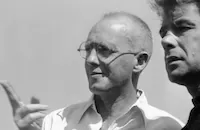
John Farrow
Cast

John Wayne
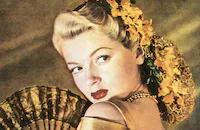
Lana Turner

David Farrar

Lyle Bettger

Tab Hunter
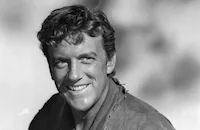
James Arness

Dick Davalos

John Qualen

Paul Fix

Lowell Gilmore
Luis Van Rooten

Alan Hale [jr.]
Wilton Graff
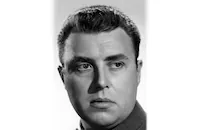
Peter Whitney

Claude Akins

John Doucette
Alan Lee
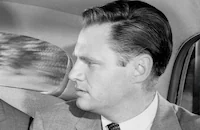
Adam Williams
Gil Perkins
Fred Stromsoe
James Lilburn
Tony Travers
John Indrisano
Joey Ray
Loren Brown
Gail Robinson
Joe Brooks
Frank Losee
Cameron Grant
John O'malley
Gavin Muir
Dick Lupino
Patrick O'moore
John Dodsworth
Harold Dyrenforth
Ed Coch
Charles Wagenheim
Edward Colman
Trudie Wyler
Alma Beltran
Pilar Del Rey
Jean De Briac
Antony Eustrel
Gloria Dea
Josephine Para
Lucita
Isabel Dwan
Theresa Tudor
Renata Huy
Victor Bartell
Eddie Lebaron
Abdullah Abbas
Gilchrist Stuart
James Fairfax
Bruce Lester
Stuart Holmes
Richard Binder
John Sheffield
Ken Bischof
Ray Linn
William Lee
Charles Shrouder
William Reeve
Lee Gotch
Nacho Galindo
Tudor Owen
Roger Creed
Crew
Franz Bachelin
Joe Barry
Gordon Bau
James Warner Bellah
Carl Benoit
Chas. A. Bonniwell Jr.
Herbert E. Cheek
John Ciorga
John Ciorga
Howard Claire
William Clothier
Emmett Emerson
Robert Erbes
Robert E. Farmer
John Farrow
John Farrow
Argon Faught
Henry Fields
Sam Friedle
Henry H. Fuhrman
Jacob Gade
Ed. J. Gaj
Edwin S. Hall
William Hauff
Ray Heindorf
Adean Henderson
Stuart Higgs
George Hopewell
Horace L. Hulburd
M. K. Jerome
Robert P. Johannes
H. F. Koenekamp
Russell Llewellyn
Moss Mabry
Gilbert Mandelik
Maxwell Mann
Owen Marks
Wally Meinardus
Robert P. Miller
J. A. Neil
Harold Noyes
Webb Overlander
Ralph D. Owen
Maurice De Packh
Jackson Parks
Weldon Patterson
Norman Pringle
Leonid Raab
Leon Roberts
Victor L. Scheckel
Francis J. Scheid
Jack Scholl
Eugene C. Steiner
Myrtle Stoltz
Johann Strauss
William A. Thompson
Robert Turner
John Twist
William Wallace
Roy Webb
Roy Webb
John W. Woods
William Ziegler

Videos
Movie Clip




Trailer
Film Details
Technical Specs

Articles
The Sea Chase (1955)
Based on a true story, The Sea Chase stars Wayne as Capt. Karl Ehrlich, a German captain of an old steam freighter, who is in port in Sydney, Australia during the summer of 1939. A former naval officer who suffered repercussions for his anti-Hitler stance, Ehrlich sees that war is imminent and prefers to take the risk of sailing back to Germany, rather than be detained by the Allies. Along for the ride is an old friend, Britisher Jeff Napier (David Farrar) and his fiancée Elsa Keller (Turner). Just before the ship leaves, the German Consul-General asks Ehrlich to help one of their spies escape. The spy turns out to be Elsa Keller.
Filming began in September 1954, with the cast and crew going on location to the Big Island of Hawaii, where Warner Bros. had purchased an old freighter and sailed it to Kealakekua Bay. According to Tab Hunter, it took two-and-a-half hours by boat each day to reach the ship, which took up precious time in the shooting schedule. Although this was a Warner Bros. production, John Wayne was able to hire his friends, like character actor Paul Fix, cameraman William H. Clothier and rising star James Arness, who Wayne would soon convince to take the role of Matt Dillon on TV's Gunsmoke. Also in the cast was Claude Akins and future Gilligan's Island star, Alan Hale, Jr. Tab Hunter, who had just signed a long-term contract with Warner Bros., had been looking forward to the film, but was dismayed at his small part, and even more upset when his big scene with Lana Turner was later cut.
The making of The Sea Chase was a mixed bag for all concerned. For Wayne, it was the best of times and the worst of times. Just as location shooting finished, on November 1st, (coincidentally the day his contentious divorce with his ex-wife was settled), he married his girlfriend, Pilar, in Hawaii. The Hawaiian adventure may have ended happily, but it had not started out that way. Wayne, who had just finished filming the ill-fated The Conqueror (1956), went to Hawaii a few days early with Pilar and had gone skin diving. The result was a bad ear infection that plagued him for months. As Paul Fix later remembered, "He was in so much pain when filming began that he was on strong painkillers. You'd see this glazed look come over his eyes from the medication and his ear was so swollen that for several days John Farrow could only shoot him from his good side." At one point, production had to be halted for several days so Wayne could be flown to San Francisco to see a specialist.
A pain of a different sort was Lana Turner. According to Wayne, Turner "took an instant disliking to our director. And she didn't much like the rest of the cast. In fact, she didn't much like anything." After a few days of Turner showing up late and hung over or not showing up at all, John Farrow fired her. Devastated, Turner went to Wayne for help. He scolded her for her unprofessional behavior, which made her cry, but her tears earned his sympathy. Wayne intervened on her behalf with Farrow and Turner was back on the picture. While she was grateful to Wayne, she was still highly insecure. Turner would insist that Wayne not touch her hair or smudge her makeup during their love scenes, which caused the puzzled Wayne to ask, "How am I supposed to make love to a woman who won't let me touch her?"
One member of the cast who remembered the experience in a brighter light was James Arness, who enjoyed working with his friends, going surfing with Claude Akins at White Sands Beach, and acting with Lana Turner, who he called "beautiful and very friendly with all of us. The movie was completed on schedule, without a hitch." Tab Hunter also remembered Turner fondly, "She was tiny but every inch the radiant movie star." When Hunter, then only 23, blurted out that he had been a fan of Turner's since he was a kid, Turner responded by sitting in his lap and smiling provocatively at him. Hunter, who is gay, admitted that he turned red and "didn't know what to do with [his] hands."
The critics didn't seem to know what to do with The Sea Chase when it was released in June, 1955. Bosley Crowther, writing for The New York Times lamented that it "might have been a tremendous movie--a genuine saga of Nazi arrogance on the sea--if producer-director John Farrow had stuck faithfully to Andrew Geer's book." Wayne fared no better, coming in for Crowther's criticism for acting "as though he were heading a herd of cattle up the old Chisholm Trail."
The Sea Chase may not have been a box-office hit, but John Wayne needn't have worried; he continued to make at least a film a year for the next two decades. James Arness would soon be Matt Dillon on TV for twenty years and Tab Hunter was on the verge of being a major heart-throb.
By Lorraine LoBianco
SOURCES: Arness, James, Reynolds, Burt, Wise, Jr., James E. James Arness: An Autobiography Crowther, Bosley " 'The Sea Chase'; John Wayne Stars at the Paramount" The New York Times 11 Jun 55 Cusic, Don The Cowboy in Country Music: An Historical Survey with Artist Profiles David, Ronald L. Duke: The Life and Image of John Wayne Hunter, Tab, Muller, Eddie Tab Hunter Confidential: The Making of a Movie Star The Internet Movie Database Munn, Michael John Wayne: The Man Behind the Myth Roberts, Randy W., Olson, James Stuart John Wayne: American

The Sea Chase (1955)
John Wayne Legendary Heroes Collection
Born Marion Robert Morrison in Winterset, Iowa, John Wayne first worked in the film business as a laborer on the Fox lot during summer vacations from U.S.C., which he attended on a football scholarship. He met and was befriended by John Ford, a young director who was beginning to make a name for himself in action films, comedies and dramas. It was Ford who recommended Wayne to director Raoul Walsh for the male lead in the 1930 epic Western The Big Trail, and, although it was a box office failure, the movie showed Wayne's potential.
For the next nine years, Wayne worked in a multitude of B-Westerns and serials in between bit parts in larger features. Wayne's big break came in 1939, when Ford cast him as the Ringo Kid in the adventure Stagecoach. Wayne nearly stole the picture from his more seasoned co-stars, and his career as a box-office superstar began. During his 50 year film career, Wayne played the lead in 142 movies, an as yet unsurpassed record, and was nominated for three Academy Awards®, winning the Best Actor award in 1970 for his performance in True Grit.
Details of The John Wayne Legendary Heroes Collection Films
Blood Alley (1955) - An American seafarer patrolling the South Seas is asked by the daughter of a missionary doctor killed by the Communists to help transport the citizens of a small Chinese town to freedom in Hong Kong. This action-adventure based on A. S. Fleischman's novel, marks the first on-screen pairing of movie legends John Wayne and Lauren Bacall.
DVD special features include:
Newsreel footage
- The Hollywood Foreign Press Honors John Wayne
- Crusade for Freedom
- John Wayne and The Legion Poppy Sale (silent clip)
- Air Force Honors the Cast of Blood Alley
-1955 Promos on Blood Alley - Wayne discusses how he made it into the movies; "the monster" of movie land; the Mitchell BNC camera and his use of his home movie camera to capture scenes while on Blood Alley
- John Wayne trailer gallery
McQ (1974) - John Wayne forcefully enforces the law in this high-velocity thriller that's a revenge western set in the big city. Police Lieutenant Lon McQ (Wayne) investigates the killing of his best friend and uncovers corrupt elements of the police department dealing in confiscated drugs. Directed by John Sturges (Ice Station Zebra, The Magnificent Seven), McQ also stars Eddie Albert (Roman Holiday) and Colleen Dewhurst (Annie Hall, Dying Young).
DVD special features include:
- Featurette
- John Wayne trailer gallery
The Sea Chase (1955) - John Wayne and Lana Turner are a formidable romantic team in this harrowing adventure directed by Academy Award-nominee John Farrow (Wake Island). Sea captain Kal Erhlich (Wayne) is an anti-Nazi German freighter captain at the outset of World War II attempting to sail his ship from Australia to the North Sea rather than risk internment. Both Allied and German ships follow in pursuit, while Erhlich battles storms, sharks, and romances.
DVD special features include:
- John Wayne trailer gallery
Tall in the Saddle (1944) - In this fast-paced entertaining western, John Wayne stars as Rocklin, a cowboy who upon arriving at a ranch to work as a cowhand finds his employer was just murdered. Although he has no friends, and no money, Rocklin stays in town, intent on tracking the killers and uncovering a plan to inherit the dead employer's riches.
DVD special features include:
- John Wayne trailer gallery
The Train Robbers (1973) - The action never stops in this western starring John Wayne, Ann-Margret and Ricardo Montalban. A gunhand named Lane (Wayne) is hired by a widow, Mrs. Lowe (Ann-Margret), to find gold stolen by her husband so that she may return it and start fresh. However, once they cross the border into Mexico to recover the loot, they discover two very different pursuers: a large group of bandidos and a lone horseman (Montalban), both of whom know their every move.
DVD special features include:
Two featurettes
Working with a Western Legend - an inside look at Wayne with stuntmen Jerry Gatlin, Dean Smith and Terry Leonard
The Wayne Train
- John Wayne trailer gallery
John Wayne Legendary Heroes Collection
Quotes
Trivia
Notes
Voice-over narration by David Farrar as the character "Napier," and delivered in the style of a personal reminiscence, is heard intermittently throughout the film. At the end of the film, the fate of characters "Karl" and "Elsa" are left uncertain, and Farrar concludes by asking: "Had the sea taken them or had they reached the nearby shore, where the fjords could hide a secret?...Knowing Karl as I did, I have my own opinion." An acknowledgment at the end of the film expresses gratitude to the "people of the islands" and "the Royal Canadian Navy for their assistance in the making of the picture." Actor Claude Akins' onscreen credit reads "Claude Akin." Although the Caribbean and Mexican coastline were scouted as possible location sites for the shooting of The Sea Chase, the Motion Picture Herald review and Hollywood Reporter news items and production charts reported that portions of the film were shot around the Hawaiian Islands.
Although he is not credited onscreen, Frank S. Nugent is listed on the CBCS and a June 1954 Hollywood Reporter news item as one of the film's screenwriters. Hollywood Reporter news items add Webb Overlander and Henri Letondal to the cast, but their appearance in the film has not been confirmed. An Hollywood Reporter news item also reported that Michael Pate was cast; however, he did not appear in the final film. M-G-M loaned Lana Turner to Warner Bros. for the production. The song she sang in the film, "Steh' Ich im Finster Mitternacht," also known as "Treue Liebe," was a German song given English words for The Sea Chase. According to Hollywood Reporter news items, John Wayne was hospitalized twice for an ear infection during filming, and actors Paul Fix and Luis Van Rooten suffered infections brought on by skin diving.

Miscellaneous Notes
Released in United States on Video July 25, 1990
Released in United States Summer June 1955
CinemaScope
Released in United States Summer June 1955
Released in United States on Video July 25, 1990














